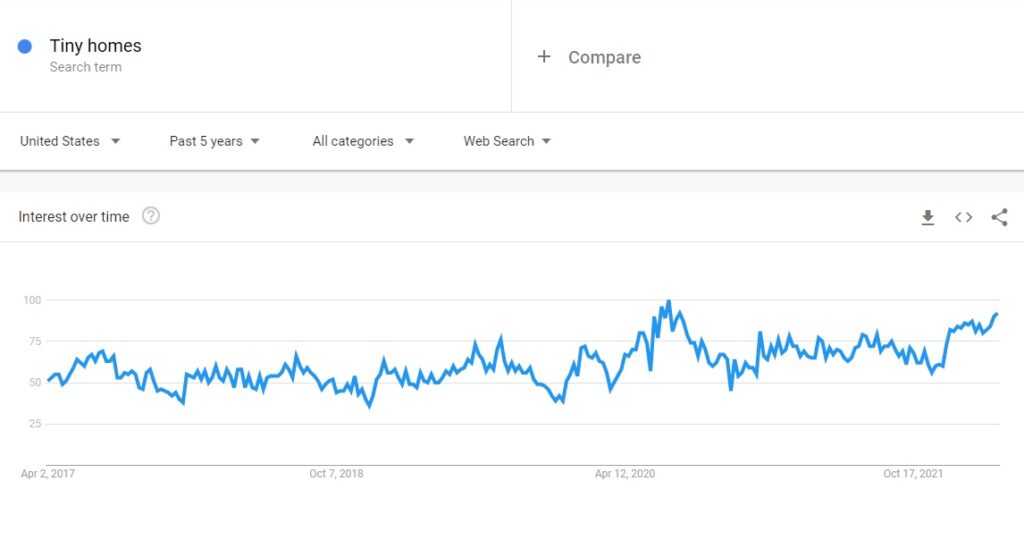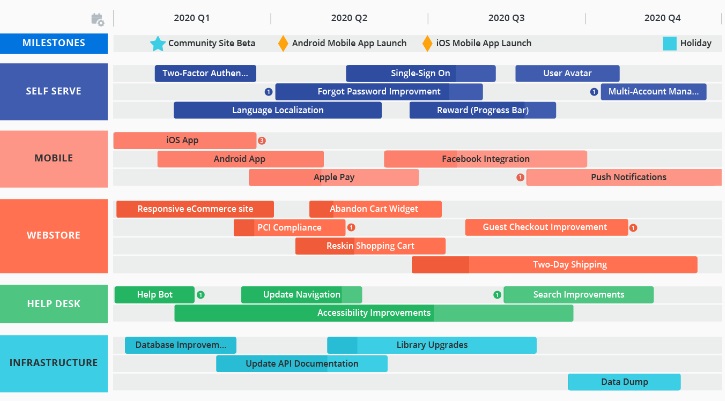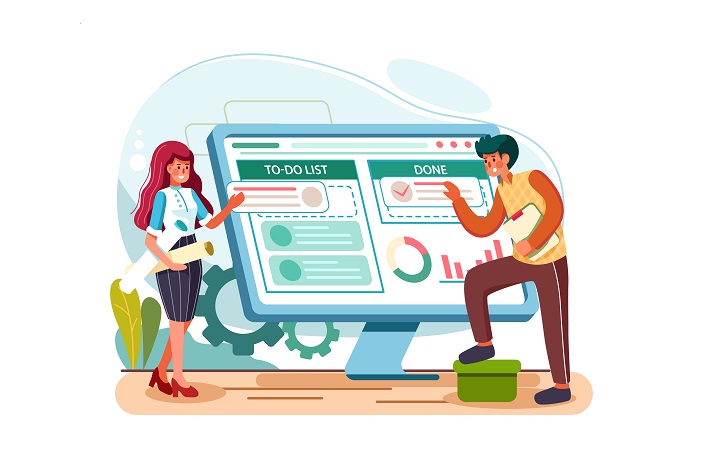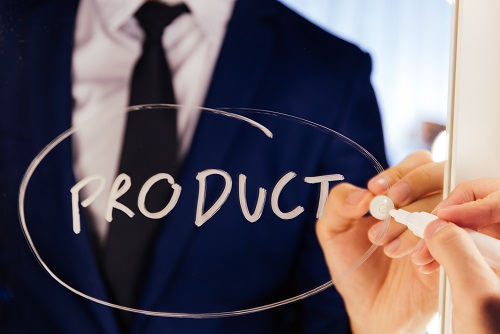Publish Date - March 29th, 2022
|Last Modified - October 23rd, 2023
The growth of digital technical products has exploded over the last twenty years with the adoption and implementation of the product life cycle or, more particularly the software development life cycle. Couple this with dozens of flavors of agile development and you have a recipe for fantastic products that can encapsulate user desire and needs. Therefore, you can’t help but wonder, how does one even begin to create a new product that solves a particular problem? It can’t be that easy, right?
Right. Books like The Lean Startup: How Today’s Entrepreneurs Use Continuous Innovation to Create Radically Successful Businesses by Eric Ries, and Hooked: How to Build Habit-Forming Products by Nir Eyal, and hundreds of others try to get to the root cause of a person’s problem and how to build products to fix it and delight them.
As a product manager, I’ve worked on many different products from the ideation phase to maturity. I’ve also had the honor of working with dozens of highly successful brands and products to see what makes them work. Without a doubt, there seem to be a few common elements that enable user success.
How to build a successful product from scratch (with examples) in two stages!
Note: This article can be used to help support feature, product, and minimal viable product (MVP) releases, not just with how to build products. It’s ultimately good business practice to use these strategies when dealing with all-things product. There are also great Udemy and Coursera courses on this if you’re interested – feel free to check them out!
Stage 1:
Step 1: Have “that” idea

The one common element that unites many of the books I referred to earlier in this article is “providing a value proposition to the customer or client.” Providing value to your customer is at the prime manifesto of all product driven businesses, since a happy customer is a customer that pays and stays. Therefore, having “that” product idea is everything, but doesn’t necessarily need to be absolutely original to be successful.
Consider Uber, Lyft, Netflix, or Shopify. They are all products of dead ones or monopolies like Taxi services, Blockbuster, and Amazon eCommerce. Products like Cloudflare is just an evolution from the founders wanting a more secure, robust internet. They found their calling providing millions of websites and apps edge caching, which has turned them into a huge company.
A lot of people use mastermind sessions in business groups, or brainstorming sessions amongst friends to create that “idea.”
Through my own experience, I’ve helped create Super Tiny Homes – a website that already has 150,000 users per year and growing. While it’s not the first tiny homes blog, I’m focusing my digital skills and a growing trend in the market (for tiny accommodations) while monetizing the growth in that website for it to be self-sustaining.
Step 2: Ensure there’s interest in your product

Whether you’re checking Google trends or looking at keyword data – do your market research. Take polls or use crowdsourcing tools like PickFu to find out if a particular demographic would actually like your product. At this point, you may not need to have an idea at all while you’re looking for interest or a problem that needs to be solved. It is indeed hard to find a market gap in an industry without having experience in a related industry or something that can be transferred laterally.
Understanding interest is really important to product design and product development life cycle. The better you can understand your customers’ interests, the better your product can be.
A company I’m currently consulting for called Floatcard.com, who found a market gap in Canada for digital expense card management for small- and medium-sized businesses. Enterprise sized businesses use expense management tools like SAP because they can afford it. In fact, in the US, most major credit card companies and their competitors like Brex and Divvy, dominate the digital expense card management space. For legal and financial reasons, the US and Canada have very different requirements on extending credit to a business. These are the many reasons why Float was created to help small- to medium sized businesses in Canada offset the high cost of digital expense card management of large-scale businesses, and has been so successful to date.
This leads me into an important caveat: Legal and regulatory barriers. When it comes to a product, there could be considerable interest, but a regulatory body may be blocking foreign companies from expanding into the industry leaving a perfect opening for a startup!
You also want to analyze your competitors, if there are any. If not, you’re lucky and cursed as you won’t scale as fast. On the plus side, you’ll have a first-mover’s advantage and can be the price setter.
This is why creating a website in a niche industry can be so lucrative. It’s pretty easy to check search trends for particular products, spin up a website (on whatever CMS), and scan information from competitors and co-adjacent companies (like Wikipedia, big publishers, and government sources).
I believe that ensuring there’s an audience for your product or service is one of the most important aspects of creating a successful product. An audience equals money and money means sustainability for your business.
Step 3: Define your product and know how it can help your customer

After you have your idea and know there’s an audience for it, you should validate your concept. You can do this in a variety of different means. The purpose of this is to ensure that the “idea” that you’ve created will actually provide value to people. For example, you can make product prototypes or “screens” to get your point across and elicit feedback from a number of different people.
Normally, the more complex a product is, the more user feedback you’ll need. You can use user-testing, crowdfunding surveys, and usability tests like card sorting, to prioritize specific ideas for your product. Some major projects I’ve worked on (including TELUS, a multi-billionaire Canadian Telecom company) have utilized surveys to collect a ton of potential customer feedback and also focus-groups with prototypes to solicit initial Minimum viable product feedback.
For example, a few years ago, I had the opportunity to participate in user-testing post-launch of Google Analytics 4 (GA4). As a frequent user of universal analytics (UA), GA4’s predecessor, the Google Analytics product team saw me as a valuable persona to interview. During the process, I was quizzed, recorded, and walked through questions on how GA4 functions because I was a relatively new user to this product (but not Google Analytics overall). This experience was crucial in teaching me the importance of understanding your audience and to empathize with them so that you can build a product that satisfies their needs.
Overall, what you’re looking for in this step is building your user personas and how people will interact with your idea or prototype/proof of concept. You may also discover your must-haves, should-haves, and could-haves when it comes to product features, which will help shape your MVP release.
Step 4: Create that business plan

Once your idea is set, you already have the majority of what you need to build a business plan. The next step is to analyze whether your business will be a feasible venture. My product brain switches on at this point: Determining whether you will actually generate revenue based on your one-, two-, and three-year projections will be crucial for initial investors and, ultimately, yourself.
As I already mentioned, prior to this step the majority of the work has already been done, including having an idea, a value proposition, and identifying your target audience. If you haven’t gotten to it by this point, now is the time. There are tons of one-pager business feasibility plans out there to help you. In fact, hubspot has a pretty easy one to fill out.
I developed a more detailed business plan for Super Tiny Homes (a WordPress), where I outlined the following:
Company Description
Competitive Analysis
Value Proposition / Opportunity
Industry Analysis
Implementation Timeline and Roadmap
Financial Summary
Marketing Plan
Target Market
Team
External Funding Required (Kickstarter, Funding (Series A,B,C)
With this information, I was able to deduce that my business partner and I would be paid back in the middle half of year two of our investment. Here’s a similar example of my 3 year website growth projections of a solar panel website (a client of mine in November 2021). I used traffic growth and a number of different conversion rates as a means to calculate the cost per leads the client would need to charge their vendors. Knowing your business model and how you’ll generate money is extremely important.
Once you deem your strategy feasible, and you’ve secured some resources/funding, the fun part – the building – begins!
Stage 2:
Step 5: Build your team
This process kicks off with building your (skeleton) crew. Typically, product-first startups are built out in partnership, with family, friends, or colleagues. These will be the founders of your company’s particular feature or product. They’ll own, operate, and help scale the business.
Having worked with multiple startups and being a part of one myself, – I think it’s important to have a diverse set of founders where everyone brings something to the table. For example, in the case of Super Tiny Homes, one of my business partners has a strong disposition to sales and attitude when it comes to negotiating, and is an idea windmill. This makes them extremely suited to business development. The other business partner is more analytical, methodical, and has great time management skills – this makes them well-suited for delivery and content creation.
Backend development is completely different than frontend development. Knowing the difference in a team member who understands both skills is extremely important. Outsourcing may be important to scaling your team in this precarious time.
Also, in this stage, you’ll likely have little money and are paying out of pocket to fund all of your monthly expenses and paying off contractors and freelancers to help keep your build afloat.
Step 6: Choose a framework and construct that roadmap and timelines

The next step is to gather your team to create a roadmap and build timelines. This is where the MVP is important. Whether you’ve hyped the product up or built a huge network of folks to let them know that the release is here, you’ll need to provide all your internal and external stakeholders release timelines for your product. The MVP is invaluable here as you’ll want to generate feedback and revenue as quickly as possible to make up for the money you’ve spent so far to realize your dream. Most people will choose a framework like agile, to get their delivering value fast. I learned agile by doing my PMI-ACP!
Knowing your development process will be instrumental to the early stages of you building your product, and synergizing with your development team is crucial for success.
Once this is established, you’re ready to build your product.
Step 7: Share your vision
This step deserves its own mention. It’s super important to know and grasp your ability to market the vision for your product early on. While you should have already thought about how this would work into your business plan, you need to determine how users will find your product. Whether this is purely through Google traffic (paid and organic) or you’ve paid influencers to hype up your products, knowing the channels to build the bridge to your traffic will be key to your success.
It also helps to have a growth marketing strategy incorporated into your product early on. Knowing that PPC and organic work together is fairly basic marketing knowledge. However, also knowing that you can scale your affiliate marketing by targeting PPC terms that bloggers may be looking to generate revenue is the mission of a growth marketer. Leveraging social traffic or organic social traffic (through the likes of Quora or Reddit or mini blogging) and harnessing these channels into users of your product (in the digital space) can go a long way.
Create your marketing plan early on and designate someone to own that plan. This will gear you up for success and prevent too many cooks in the kitchen.
Step 8: Start the cycle of iteration

At this point, you’ve began developing your product and released an MVP. You’ll want to have a good project manager / program manager / scrum master handling the team in these beginning stages as the team is forming.
Here are some tips for your team to continue to develop a successful product:
- Use a particular framework that suits your product and team and stick to it for a while. It may be cumbersome, but it’ll provide some structure to your team, deliverables, and outputs that stakeholders will appreciate.
- Ensure that you have an easy way to capture feedback from early adopters and engage them regularly so you have knowledge on what things may be a delighter, and other things that may be waste.
- If you’re in digital or tech, remember that your team is the product and taking care of them is taking care of the product.
Conclusion
Have you ever wondered how a digital technical product is created and brought to life to meet a particular need? Hundreds of books and articles are available on this topic, and in this blog post, I’ve tried to summarize the process for you from my own experience.
Essentially, there are two stages to building and launching a successful technical product. Stage one is all about planning and strategizing, including having “that” idea, ensuring there is interest and a need for your product, defining it, and creating a business plan. Stage two is execution: Building your team, choosing a framework, and selling your product.
After you’ve started to release iterations, you’ve entered the startup phase of your product. Congrats! Keep in mind that these stages may take place out of order or need to be repeated. For example, funding, re-orientation of your business plan, and team structure. This is normal as you scale due to the shape and audience of your product. Don’t get bogged down by this. Just remember, if you’ve made it this far, you’ve built something. Be proud of what you’ve done!
Let me know if I missed anything or if you liked my post!
The problem you are solving, your customer base and your value proposition are the three most important things you need to consider when solving a product. Resources (Funding, team, support), roadmap, framework and research can all follow suite if you have these three things in order.
There billions of adults in this world all living their lives similar to you. Realistically, someone else has had an idea like yours or even better! Making sure that a) there’s interest in your product and b) the competition won’t sink your product – are extremely important things to know.
Understanding the customer, client or user’s needs. When you know their needs you can build a plan to solve that problem. Sometimes, customers may not know if they need a product until they’re asked or try that product. This is what product people refer to as a “delighter”.
